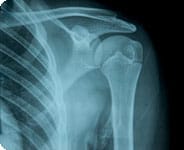Shoulder Pain Pump Lawyers
Shoulder pain management pumps used following many arthroscopic shoulder surgeries have been linked to the development of a rare condition which causes the progressive destruction of cartilage in the shoulder joint, known as chondrolysis.
Please note that the lawyers at Saiontz & Kirk, P.A. are no longer taking on new cases involving Pain Pumps. The content on this page is provided for informational purposes only.
This painful and debilitating condition has no consistently successful treatment and often results in permanent shoulder pain. Symptoms of problems after use of a shoulder pain pump may include:
- Shoulder pain whether in motion or at rest
- Clicking, popping or grinding of the shoulder
- Shoulder stiffness or weakness
- Decreased range of motion
The lawyers at Saiontz & Kirk, P.A. were previously investigating shoulder pain pump lawsuits for individuals who have developed cartilage damage following arthroscopic surgery.
New cases are no longer being accepted by Saiontz & Kirk, P.A. This page is maintained for informational purposes only.
SHOULDER INFUSION PAIN PUMP COMPLICATIONS
Recent research has established that there is a direct link between the shoulder cartilage complications use of intra-articular pain pumps to deliver medication directly to the site of the surgery.
The devices may cause a devastating condition, known as Post-Arthroscopic Glenohumeral Chondrolysis (PAGCL), which typically manifests 3 to 12 months after shoulder surgery.
When a shoulder pain pump is used, a catheter is inserted into the shoulder joint so that the pain pump can infuse medication for 2 to 3 days. The disposable pump is in place when the patient is discharged and it is removed when it is no longer needed.
Pain management pumps grew in popularity in recent years, and many doctors prescribed them following arthroscopic shoulder surgery since patients are able to control the pain without the undesired side effects of narcotics.
While the manufacturers promoted the devices as a way to reduce the amount of breakthrough pain and speed up recovery time after surgery, researchers now indicate that shoulder pain pumps should be avoided following arthroscopic surgery, especially those which deliver bupivacaine with epinephrine. Any benefits provided are greatly outweighed by the risk of permanent shoulder damage.
The use of post-operative pain pumps carry a substantial risk of irreversible cartilage damage which could result in the need for shoulder replacement surgery and lead to life-long pain and lost mobility. Postarthroscopic glenohumeral chondrolysis (PAGCL) is only known to occur among those who have used a shoulder pump, such as the Stryker Pain Pump or I-Flow On-Q Pump.
SHOULDER SURGERY PAIN PUMP LAWYERS
Individual lawsuits and class action suits are being reviewed nationwide against the manufacturers of the shoulder pain pumps for those who have suffered cartilage damage following arthroscopic surgery. The manufacturers failed to provide proper warnings about this problem which could have prevented devastating injuries.
New cases are no longer being accepted by Saiontz & Kirk, P.A. This page is maintained for informational purposes only.

